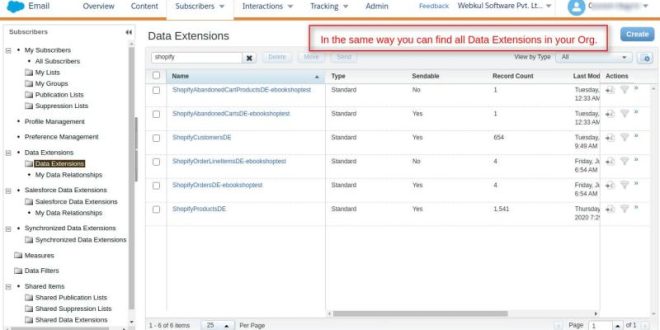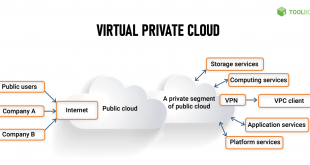Marketing Cloud Data Extension – Creating data extensions in the Marketing Cloud is one of the most important aspects to learn. Data extensions can be a difficult subject to learn, and the fact that there is more than one way you can create a data extension and add contacts to it can be confusing.
In this guide, I share two ways you can set up a data extension, through Email Studio or by using Contact Builder. There are subtle differences between the two, which I will point out as we go along. I have also included a video walkthrough for each to guide you.
Marketing Cloud Data Extension
Once you’re in Email Studio, you can navigate to Subscribers → Data Extensions in the dropdown menu.
Data Extension Marketing Cloud Guide Sql Vs Nosql
This brings me to the overview screen. If you are new to the Marketing Cloud, these data extensions may be present by default because they are generated by the system. On the left side, you can also see the management of profiles, the management of preferences and more – but these are more for working with lists.
Find the “create” button at the top right. I will just go with the “Standard Data Extension” for this tutorial, but there is also the option to create a Filtered Data Extension.
We can then choose a data retention policy. This allows you to wipe the records in that data extension or even wipe the data extension itself after a certain amount of time. This may be for compliance reasons, perhaps because you simply want to keep a tidy database.
Now we come to the most important section, where we define the fields for our data extension. A data extension is essentially a table, so think of these fields almost as the columns we’ll have later.
Manage Data Extensions Created With The Upload Form
For this example, we are talking about subscribers, so let’s start with the email field. Note that I can now set the data type – let me quickly cover the options:
A note about date fields in the Marketing Cloud: because date fields are actually date/time, you can also include the hour and minutes. Dates are stored in specific time zones, which is something to consider, especially if you’re a global organization and not everyone is in the designated time zone in Marketing Cloud.
At the bottom, you will also see “Submit Relationship”. This determines which fields you associate with your subscribers based on the subscriber key (eg the email field). “Subscribers” (highlighted in the image below) is essentially the master list of all your contacts within Email Studio.
We have already mentioned before that in this table, the email address will always be unique because it has a primary key flag. In addition, we’ll also say that this is actually the unique identifier associated with the subscriber key for our main table of all contacts, which is a very basic concept in the Salesforce Marketing Cloud.
Synchronizing Sales/service Cloud Data Into Marketing Cloud
After creating the data extension, you will return to the overview screen. Let’s take a quick look to see if we lived up to our expectations. On the left side, you can see that a foreign key has been automatically populated. You can also see that it is used for sending, the relationship of the subscriber, and finally on the right side, we can see the various fields that we have added, including their settings.
This overview you now see of your existing data extensions is similar to the one available in Email Studio:
Go straight to “Create” and the screen we get to has many options that are the same as the ones I covered in the Email Studio section.
We will give it some properties. Note that there are slight differences between how data extensions are handled in Email Studio versus Contact Builder, e.g. The primary key was an option on the right side in Email Studio.
Segmentation In The Insurance Using Sfmc
The attributes I will add are: email address, first name, last name and why not add “Active” (binary true/false).
I made the email address the primary key, which is the unique identifier of the subscribers, so that it automatically becomes required.
You can define other fields as needed. This is one of the subtle differences between Email Studio and Contact Builder when creating a data extension. If you want fields that are not required in Email Studio, you actually have to mark something they call “null”. Here in Contact Builder, it’s a little clearer why it’s called “required” and isn’t selected by default.
Again, I need to define a “Shipping Relationship”. in which case it is already defined. Also note here, I can only get “subscriber key” as a relation, which is fine, because that’s usually what you want.
Marketing Cloud Deselect Review
Let’s click the Finish button. There, created! Now let’s look at this new DE we created.
On the left side, almost the same settings we had in Email Studio, with a few key differences. Here, we have some control settings that allow us to set permissions for this data extension. This is useful to protect the extension of the data and give permissions to only those who need it, that is to the team that prepares the data in the Marketing Cloud, an administrator or a technical marketer, perhaps.
On the right side, there are nuances in the way information is displayed, e.g. then the field of type “email”, will have @, while if it is text, it will have this ABC icon.
News Salesforce Einstein Copilot Public Beta Released: Everything You Need to Know By Anirudh Kumar February 28, 2024
Design Your Data Model Unit
Data What is Salesforce Data Ownership and why do you need it for AI? By Joseph Gaska February 28, 2024 TrailblazerDX, the ultimate AI learning event returns to San Francisco March 6-7, 2024. Register now and save 35% with code T24DEYE424 .
Contact information is stored in a data extension. A data extension is simply a table of data fields about your contacts. Data extensions can be standalone or related to other data extensions. You can use the data to run queries, extract information, and send to a subset of subscribers. You can import the data extensions manually, or you can automate the import through Automation Studio or the Marketing Cloud Engagement API. Data extensions can be used in both Contact Builder and Email Studio, but data extension permissions, sharing, and other features are live in Email Studio.
You can share data extensions with other business units by storing them in shared data extension folders. You can configure data retention policy settings, choose who can see what actions are available, set the sharing window, and decide which business units have access to a shared data extension.
Segmentation allows you to create specific criteria or rules and apply the rules to an extension of the data. Segmentation allows you to engage your largest audience and then send targeted and relevant messages to a segment of that audience to ensure you are sending the right message to the right subscriber at the right time. When segmenting data, random segments as well as filtered segments can be generated.
Salesforce Marketing Cloud: Difference Between Data Extension Vs Synchronized Data Extension Vs Salesforce Data Extension In Marketing Cloud
You can create a random data extension or add the split function, which splits subscribers from a selected data extension and places subscribers in random data extensions in Email Studio. You can create up to 12 groups at a time and apply filters to segment data into a data extent or data extents. Filters are commonly used to update existing data extents as well as to create brand new data extents.
When you create a feature group, you give it a name and you have the ability to bind the data in the Data Designer. Each attribute group includes a data model consisting of data extensions that are linked either to the contact record or to other data extensions. You can create groups of attributes, including all related data extensions at once, to ensure that all the necessary data is in the correct group. After you create a new feature group, you can build your data model by: 다. Register now and save 35% using code T24DEYE424.
Contact information is stored in a data extension. A data extension is simply a table of data fields about your contacts. Data extensions can be standalone or related to other data extensions. You can use the data to run queries, extract information, and send to a subset of subscribers. You can import the data extensions manually, or you can automate the import through Automation Studio or the Marketing Cloud Engagement API. Data extensions can be used in both Contact Builder and Email Studio, but data extension permissions, sharing, and other features are live in Email Studio.
You can share data extensions with other business units by storing them in shared data extension folders. You can configure data retention policy settings, choose who can see what actions are available, set the sharing window, and decide which business units have access to a shared data extension.
How To Create A Data Extension In Marketing Cloud (2 Ways)
Segmentation allows you to create specific criteria or rules and apply the rules to an extension of the data. Segmentation allows you to take your largest audience and then send targeted and relevant messages to a
Marketing cloud filtered data extension, salesforce marketing cloud api data extension, marketing cloud data view, synchronized data extension marketing cloud, marketing cloud data model, synchronize data extension marketing cloud, salesforce marketing cloud data, data extension in marketing cloud, data extension marketing cloud, create a data extension in marketing cloud, data extension in salesforce marketing cloud, marketing cloud export data extension automation
 Bussines News Daily
Bussines News Daily



